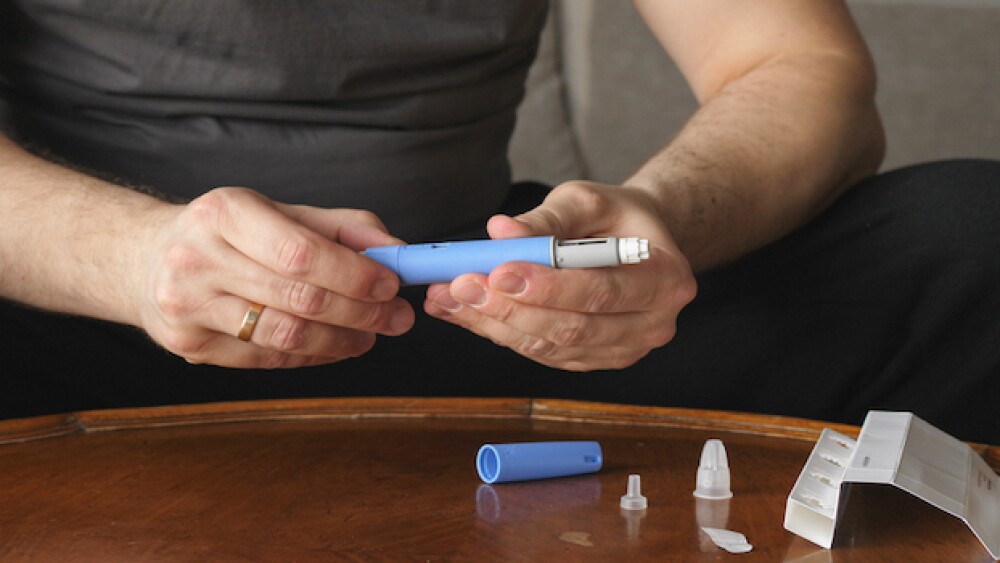Using electronic health records, healthcare analytics firm Truveta contends that Eli Lilly’s Mounjaro (tirzepatide) could achieve stronger and faster weight loss than Novo Nordisk’s Ozempic (semaglutide).
Pictured: Patient preparing a diabetes medication injection/iStock, imyskin
For overweight and obese patients seeking to lose weight, Eli Lilly’s Mounjaro (tirzepatide) might be a better choice than Novo Nordisk’s Ozempic (semaglutide), according to a comparative analysis of electronic health records by healthcare data and analytics firm Truveta Research.
In comparing Mounjaro and Ozempic, Truveta looked at the electronic health records (EHR) of a cohort consisting of 18,000 overweight or obese patients who had started treatment with either medication between May 2022 and September 2023.
Results showed that patients taking Mounjaro were three times as likely to drop 15% of their bodyweight than Ozempic comparators.
In addition, weight loss was faster with Mounjaro, which led to a mean 5.9% reduction in body fat at three months, compared to 3.6% in patients on Ozempic. At the one-year mark, mean weight loss in patients receiving Mounjaro was 15.2% versus 7.9% in Ozempic counterparts. In terms of safety, Mounjaro and Ozempic triggered gastrointestinal events at similar rates.
However, the research, its methods, results, analysis and conclusions have yet to be peer reviewed. In the meantime, Truveta has published the study’s full findings on the pre-print portal MedRxiv.
Truveta Vice President Nick Stucky in a statement called the findings “exciting and important” because it uses complete EHR data and “captures all patients, not just the insured.” This allowed Truveta to conduct a head-to-head comparison of Mounjaro and Ozempic ahead of clinical trials and using real-world populations.
Both Mounjaro and Ozempic are GLP-1 receptor agonists, which work by inducing the secretion of insulin from the pancreas in response to blood glucose levels. The two treatments are officially indicated for type 2 diabetes but have been used off-label for weight management. More recently, their active ingredients have won FDA approvals for weight loss.
Lilly’s tirzepatide earned its weight-loss indication from the FDA earlier this month, for which it is being sold as Zepbound. Novo’s semaglutide was approved as Wegovy for weight loss in June 2021.
Lilly and Novo form a virtual duopoly over the lucrative obesity market, which according to the forecast of many analysts, could reach up to $200 billion in value in the coming years. Just in the third quarter of 2023, Mounjaro made $1.4 billion while Wegovy earned $1.38 billion. Both companies have also recently announced that they are pumping more money into manufacturing to keep up with the market’s voracious appetite for weight-loss drugs.
There are currently no head-to-head randomized clinical studies pitting the two therapies against each other but in April 2023 Lilly kicked off the Phase IIIb SURMOUNT-5 study, which is set to compare tirzepatide with semaglutide in overweight or obese participants without type 2 diabetes. Earlier this month, Novo came out with its own head-to-head study to test its next-generation weight-loss combo therapy CagriSema against Lilly’s tirzepatide.
Tristan Manalac is an independent science writer based in Metro Manila, Philippines. He can be reached at tristan@tristanmanalac.com or tristan.manalac@biospace.com.






